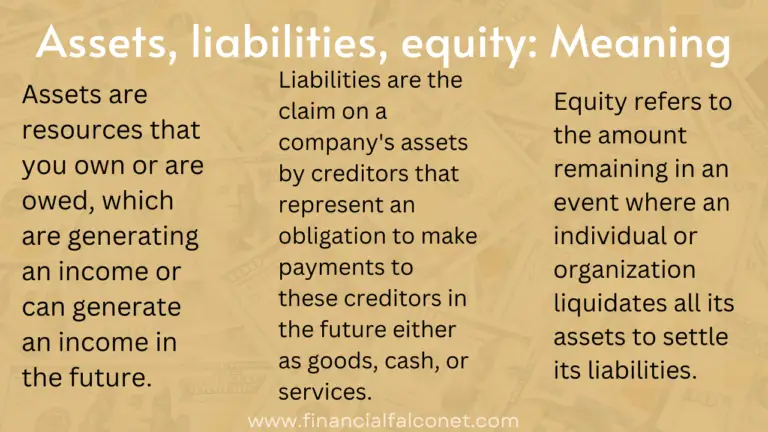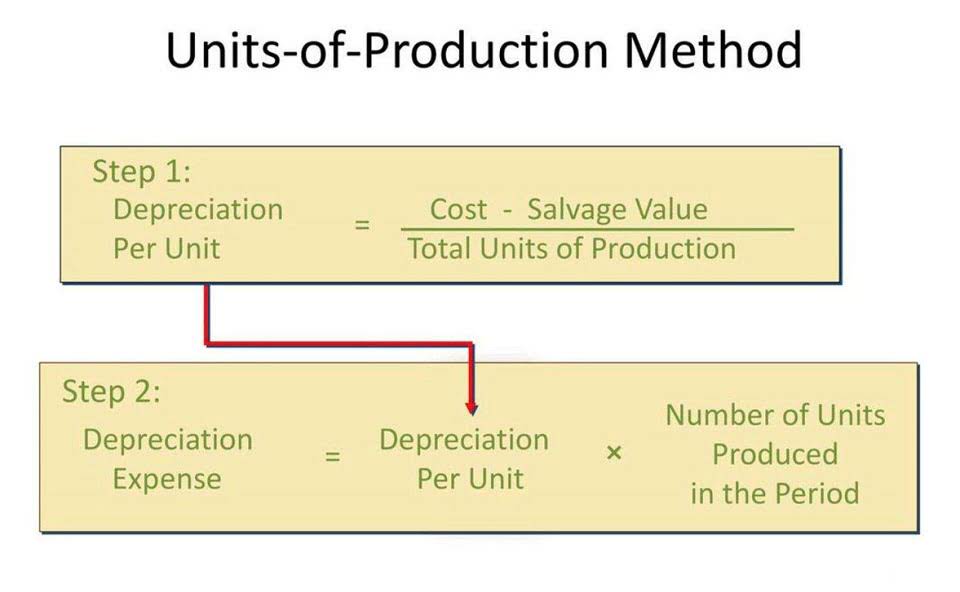This final profit figure, post all deductions and tax, forms the core basis for informed investment decisions. Depending upon the net income figure, investors may decide to buy, sell, or hold a particular stock. Net income also forms the foundation for the Return on Assets (ROA) ratio. This ratio provides insights into how effectively a company is using its assets to generate profit. A higher ROA indicates that the company is earning more money on less investment, pointing to greater financial efficiency. Operating expenses refer to costs that are directly related to the basic operations of the business.
000 pension per month: How to get Rs 40,000 as pension every month by investing in NPS? Know the calculation
It’s important to note that net income is just one metric to look at and it can vary from business to business. In Excel, we’ll compute each profit metric using the historical data points of Apple in fiscal year 2021. Using the figures from our earlier section, we’ll list the inputs below with the proper formatting, where the hard-coded numbers are entered in blue font, and calculations are left in black font. A net profit margin in excess of 10% is perceived as “good” in most cases. Indirect expenses are expenses that are incurred to run the business as a whole.
How To Calculate Net Income
- One of the most important metrics for businesses and investors to track is net income.
- A company’s net income is positive when revenues are sufficient to cover costs and expenses, including interest and taxes.
- Proper interpretation, however, requires careful analysis of the accounting methods used and examining the context of the business to ensure accurate assessment.
- In the world of finance, the value of net income proves instrumental in the calculation of many significant financial ratios.
Reach out for a personalized demo of Mosaic today to learn how you can streamline metric calculations and improve financial analysis. For example, you can monitor net income by quarter and visualize your net income’s growth over time. For SaaS valuation, investors typically rely on revenue multiples, so EBITDA isn’t as helpful in the context of SaaS companies. Keep reading to learn everything businesses need to know about net income. Splitting expenses into variable expenses and fixed expenses is useful for product pricing, determining whether to accept certain orders at a lower price, and performing breakeven analysis. Investors looking to evaluate a company’s performance can look at net income to determine how well they’re doing.
Understanding Net Income: A Company’s Earnings After Costs
These strategic investments, although they might affect short-term net income negatively, aim at generating higher profits in the future. Net income, assuming it is not all distributed as dividends, is channeled back into the business, leading to an increase in the equity. This increment is seen as retained earnings, which is a subsection of the owners’ equity on the balance sheet.
Why Is Net Income Called the Bottom Line?
It’s evident, therefore, how these ratios, underpinned by net income, each offer a slightly different perspective on a company’s financial status. It’s crucial to grasp not only what these ratios represent, but also how their values influence business decisions, strategies, and overall performance. Understanding their connections to net income can provide a more comprehensive snapshot of a company’s financial health. For instance, if you own a retail store, sales revenue would be the income generated from selling your products to the customers. At the same time, if you own properties and rent them out, the rental income you receive counts as revenue. Likewise, if your business receives interest from loans it has given or from its investments, that interest is also counted as revenue.
What is net vs gross income?
Let’s start with defining cash flow, which is the amount of cash and cash equivalents that is moved in and out of a company over a specified period of time. Understanding financial statements can be extremely confusing, especially for beginning investors just trying to figure out where to start. Net income is the most important financial metric, reflecting a company’s ability to generate profit for owners and shareholders.
Consequently, net income represents the amount of earnings retained after all costs, expenses, interest, and taxes are accounted for. For the calculation to be truly reflective of a business’s financial health, it’s crucial to ensure all monetary inflows and outflows are accounted for accurately. Remember that net income provides a window into the company’s profitability and financial standing and thus plays a crucial role in various decision-making processes, both internally and externally. Regular monitoring of net income helps businesses take necessary actions for their improvement and growth.
In the case of unincorporated businesses, you simply subtract all your business expenses from all your business income. You need to be very careful about accounting for all expenses and revenues for incorporated businesses. You have to make sure you are not double including any income or expenses. Consistently high or improving net income may suggest strong financial health; however, investors should not rely solely on this. Your costs, revenue, and expenses are directly related to how good your financial management is. While they play a valuable role in accounting, they often skew the net income figure.
Net income is a measure of business profitability after accounting for all costs and expenses. On the other hand, cash flow is a measure of the cash generated or used by a business over a specific period, including operations, investing, and financing activities. Important activities like depreciation or accounts receivable/payable, which affect net income, don’t directly influence cash flow. Net income is the total earnings or profit a company makes after deducting all costs, expenses, taxes, and other financial deductions from its total revenue.
One of the most important metrics for businesses and investors to track is net income. This is also sometimes referred to as net profit, net earnings, or — more colloquially — ‘the bottom line,’ which refers to the profits left over after total expenses have been deducted. An income statement is one of the three key documents used for reporting a https://www.adprun.net/ company’s yearly financial performance. The income statement includes the gains, losses, revenue, and expenses that a company reports in that period. Net income appears on a company’s income statement and is an indicator of a company’s profitability. Net income also refers to an individual’s income after taking taxes and deductions into account.
Business owners need to create an income statement, which is one of the three main financial statements. Also called a ‘profit and loss statement,’ or ‘p&l,’ the point of a company’s income statement is to show how you arrived at your net income. More importantly, it tells you how much money is entering and leaving your business. Net income is your company’s total profits after deducting all business expenses. Some people refer to net income as net earnings, net profit, or simply your “bottom line” (nicknamed from its location at the bottom of the income statement).
Gross income refers to the total amount of income earned from all sources before anything is taken out. Net income refers to income after all taxes and deductions are subtracted from the gross income. Net income is typically found on a company’s income statement, which is also called a Profit and Loss statement. As an investor, you can see this for yourself through a company’s financial filings with the SEC. If you’re a business owner, you can typically see this using most accounting softwares.
Some businesses prefer to deduct taxes as part of their expenses to calculate net income for a more complete picture of quarterly or annual net income. Investors and lenders sometimes prefer to look at operating net income rather than net income. This gives them a better idea of how profitable the company’s core business activities are. Much of business performance is based on profitability in its various forms. Prolonged negative cash flows that arise from operating activities is simply not sustainable, however.
That number might shift over time, but it’s important to be aware of what a company is bringing in after expenses. All three of these terms mean the same thing, which can sometimes be confusing for people who are new to finance and accounting. Over 1.8 million professionals use CFI to learn accounting, financial analysis, modeling and more. Start with a free account to explore 20+ always-free courses and hundreds of finance templates and cheat sheets. Get instant access to video lessons taught by experienced investment bankers.
The term “income statement” is used in the financial statements that a business prepares at the end of an accounting period. It then subtracts the cost of revenues (which includes the cost of raw materials or COGS), marketing expenses, administrative expenses, and technology expenses to get the net operating income. Gross income also includes revenue from other customers below the $600 minimum of a 1099 form. When expenses and costs are subtracted from these revenues, the independent contractor can produce financial statements showing a bottom line for net income. Gross income refers to an individual’s total earnings or pretax earnings, and NI refers to the difference after factoring deductions and taxes into gross income.
Investors can review financial statements with net income to determine the financial health of a company they’re investing with. When you look only at revenue, you’re not looking at the big picture costs of running a business or its profitability. Similar to how you can’t just look at your individual income to assess your personal financial wellbeing (looking at net worth is a better indicator). It’s key to look at all expenses and get a clear idea of what money is coming in and what is going out.
When basing an investment decision on NI, investors should review the quality of the numbers used to arrive at the taxable income and NI to ensure that they are accurate and not misleading. For example, your business may show a large income at the end of a quarter, but until you bring in your expenses and see the full scope of your business spending, your financial view is incomplete. Net income is the other piece of the profitability puzzle, (the first facts on the specific identification method of inventory valuation is total income), one that companies and shareholders rely on for the most accurate information. Net Income is one of the critical components of your business’s three basic financial statements. Tracking net income helps you understand the financial health of your business. The loss of equipment’s value over time, known as depreciation, can be considered an expense, as can the repayment of business loan principal, referred to as amortization.
Gross profit, operating profit, and net income are reflected on a company’s income statement, and each metric represents profit at different parts of the production cycle and earnings process. This starts with the cost of goods sold (COGS), which brings us to gross profit. Other operating expenses are then deducted, such as salaries, rent, utilities, and depreciation. The end result after deducting all these pertinent expenses from gross profit is the operating profit. Normally, a small business such as a sole proprietorship uses a simple format for an income statement, which may also be referred to as a profit and loss statement.









